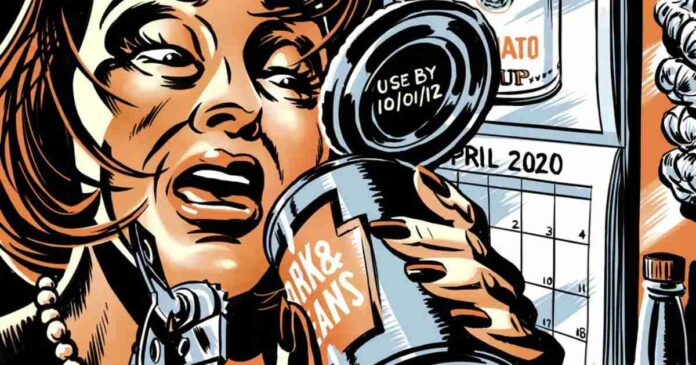I am about to tell you something you may have never heard of…the expiry dates on your food don’t necessarily mean that the food is inedible. In fact, food expiration dates are supposed to indicate the manufacturer’s estimate of when the food will be at its peak quality and flavour, not necessarily when it becomes unsafe to eat.
These dates are not a reflection of food safety for most products, with the exception of baby formula.
What the Date Labels on Your Food Actually Mean
Most of the dates you see on packaging, like “best before”, “sell by”, or “use by”, are not safety indicators. They are quality guidelines. Meaning, the food might not taste as fresh after that date, but it’s still very much edible.
In the US, the marked dates are only intended to indicate quality, and they are not regulated by any federal agency.
“Food date labels are really like the Wild West, there are no standards,” said Jeffrey Costantino, a spokesperson at ReFed, a nonprofit advocacy organisation working to reduce food waste.
Think about that for a second. We’re throwing away milk, cheese, bread, canned goods, and even eggs based on a suggestion, not a hard rule. According to the USDA, over 30% of the food supply in the U.S. goes to waste (only from individual households), and a huge chunk of that is because of misunderstood labelling.
This consumer confusion can take a toll on the climate and on household budgets.
To avoid further confusion, here is what those labels actually mean:
| Label | Meaning |
|---|---|
| Best if Used By/Before | Indicates when a product will be at its best flavour or quality. Not a purchase or safety date. |
| Sell-By | Informs stores how long to display the product for sale. Used for inventory management. |
| Use-By | The last date recommended for using the product at peak quality. Not a safety date (except on infant formula). |
| Freeze-By | Tells when a product should be frozen to maintain peak quality. Not a purchase or safety date. |
All in all, no universal standard or testing lab is determining when a can of soup goes from fine to fatal. It’s often just a conservative estimate to protect the brand’s reputation, not your health.
In fact, the only product in the U.S. that’s legally required to have an expiration date is baby formula.
Trust Your Senses, Not Just the Sticker
Does this mean that we start ignoring the labels and their dates completely? No.
Sicknesses associated with mould and bacteria found on bad food can be serious, and the fears are warranted, but the labels do little to ward off risks, experts say.
“There is nothing concrete for these dates related to food-borne illness,” said Dr Andrea Glenn, a postdoctoral research fellow and registered dietitian at the Harvard TH Chan School of Public Health.
She notes that both a global food system where products travel farther, and food handling practices can play a larger role in food safety.
A study published in 2019 that relied on surveys of more than a thousand people across the US found that 84% have tossed a food because the date marked on the package had passed. This is doing anything but good.
It’s far more useful instead to look for signs of spoilage. Odd or off odour, flavour, colour, or texture are better indicators of potential danger.
Here is how you can identify whether or not a different type of food is unsafe to eat:
| Food | Signs It’s Unsafe to Eat |
|---|---|
| Produce | Wilty veggies are still safe, but foul odour or mould = bad. Toss fruits and veggies that are brown, slimy, wrinkled, or smell bad. |
| Milk | Sour smell or lumpy texture = bad milk. Use the smell test and observe when pouring. Properly stored milk often lasts past its best-by date. |
| Eggs | Do the water test: sink = good, float = bad (don’t crack it). Vertical but sunk = eat soon. Bad eggs may not smell or look different. |
| Bread | Fuzzy, mouldy spots = toss it. Mouldy bread is unsafe even if other parts look okay. Stale bread is fine, just not tasty. |
| Uncooked Meat | Strong odour, sliminess, or slick texture = don’t eat. Colour changes may be normal (e.g., browning), but a bad smell means it’s likely unsafe. |
| Fish | Fish naturally smell, but slimy + pungent = bad. Always check the texture. For frozen fish, use the same signs once it’s thawed. |
Food Waste is a Real Problem; Be Better Now
We’ve been trained to trust labels more than our own common sense. But maybe it’s time we reclaim our judgment and stop treating expiration dates like a ticking time bomb.
Food doesn’t expire on command, and neither should our willingness to be a little smarter about waste.
Stay tuned to Brandsynario for latest news and updates





































